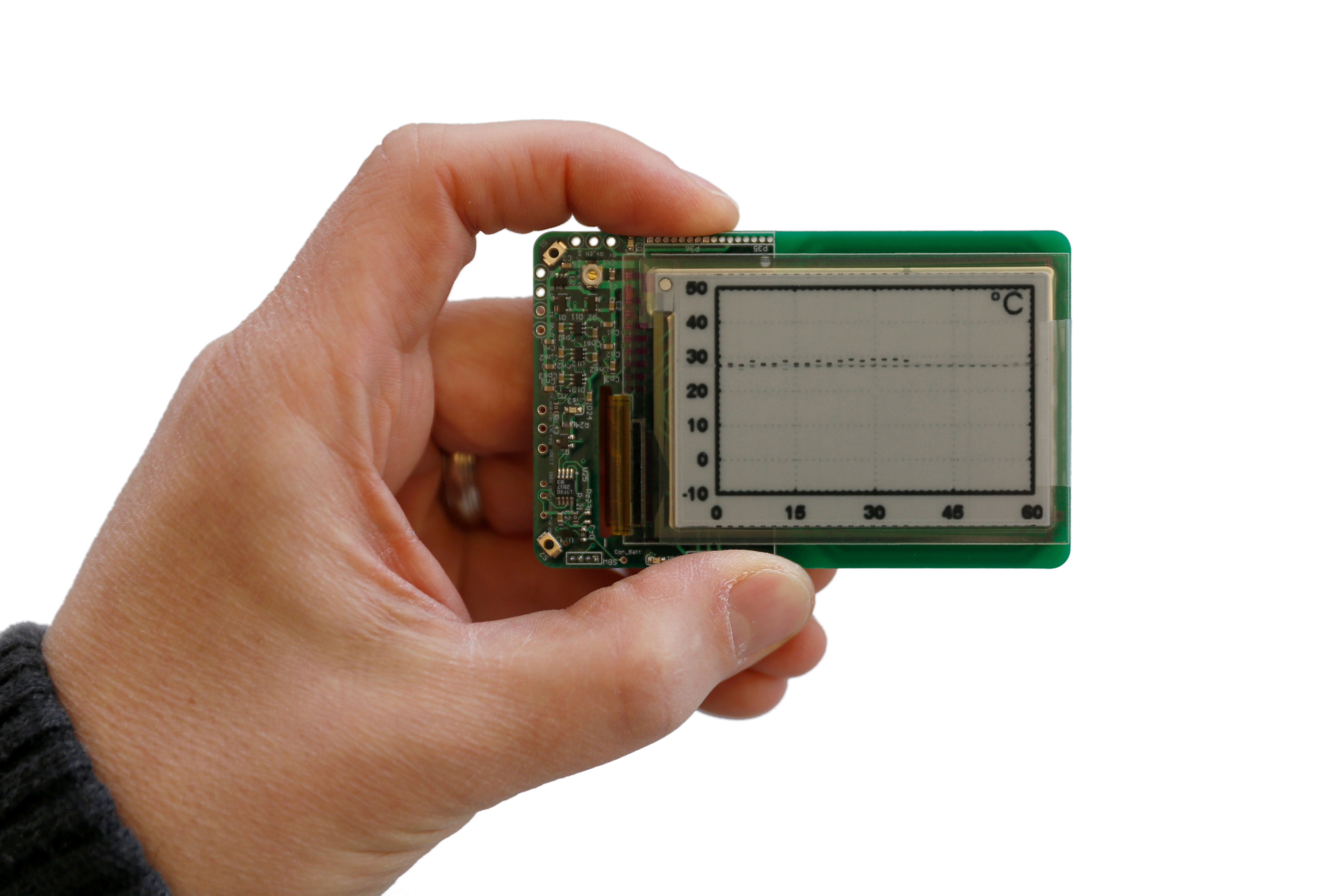Abstract

Near-field radio frequency identification (RFID) tags have a number of unique features such as being wirelessly powered, having ultra low power communication capabilities, small size, and low cost. These qualities paired with the increasing availability of commodity near field communication (NFC) enabled smart phones presents a significant opportunity to enable a wide range of new applications and usage scenarios. However, existing tags are fixed function devices that are only capable of reporting an ID when queried and thus most applications are limited to inventory management or access control. This paper presents the NFC-WISP, which is a programmable, sensing and computationally enhanced platform designed to explore new RFID enabled sensing and user interface applications. The NFC-WISP is fully powered and read by commercially available RFID readers (including NFC enabled smart phones) using the ISO-14443 protocol. Excess harvested power can be stored in an optional super-capacitor or thin-film battery enabling operation away from the reader. This open-source platform includes temperature and acceleration sensors, 2MB of FRAM, LEDs and an optional 2.7” active bistable matrix E-ink display. Expansion headers allow access to the microcontroller allowing for rapid prototyping of new applications. The use of the NFC-WISP for a perishable goods temperature and motion monitoring application is demonstrated as well as the use of wireless power transfer based on magnetic coupled resonance for high power recharging of multiple NFC devices.
Copyright Notice
The documents contained in these directories are included by the contributing authors as a means to ensure timely dissemination of scholarly and technical work on a non-commercial basis. Copyright and all rights therein are maintained by the authors or by other copyright holders, notwithstanding that they have offered their works here electronically. It is understood that all persons copying this information will adhere to the terms and constraints invoked by each author’s copyright. These works may not be reposted without the explicit permission of the copyright holder.